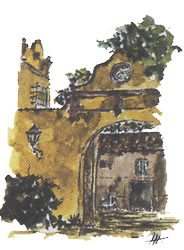Clostridium botulinum - Botulism: Clinical forms.
Clinical forms of botulism
There are four clinical forms of human botulism:
- Food poisoning (foodborne botulism), due to the ingestion of food contaminated with Clostridium botulinum in which the toxin is formed.
- Wound botulism, produced by infection of wound with Clostridium botulinum and developing toxin in vivo after growing the bacteria in the wound.
- Infant botulism, produced by production of toxin in the digestive tract of young children colonized by Clostridium botulinum (the most common cause is due to the ingestion of contaminated honey or corn syrup), followed by absorption of the toxin. These patients may have antibodies to the toxin.
- Adult intestinal botulism, caused by digestive colonization by Clostridium botulinum in the elderly, followed by absorption of the toxin. These patients may have antibodies to the toxin.
In any of the clinical forms of human botulism, and equal in the animal botulism, toxin penetrates the blood from the gastrointestinal tract when ingested preformed with a food, or when produced by the bacterium that colonizes the digestive tract (young children or adults), or in exceptional cases children from an infected wound with the bacteria. There are some foods that are more likely than others to contain botulinum toxin. Foods with a pH less than 4.5 are more difficult to be cause of botulism since at this pH C. botulinum is unable to multiply and produce toxin (this is the case of fruit juices, vinegar marinated food, etc.). Conversely, foods with pH equal or higher than 4.5 can cause botulism, since in them the multiplication and toxin production is possible (this is the case of meat, fish, vegetables, prepared dishes, etc.), on all those foods oxygen-free exposure, as with canned or vacuum-packed food, and having a pH greater than 4.6. Examples are dangerous food: cured ham, smoked, canned fish or vegetable (subjected to heat treatment insufficient to kill spores), etc. The cans contaminated with C. botulinum are usually curved, though this does not occur with type E.
The toxin absorbed irreversibly binds to the neuromuscular junctions of motor neurons, preventing the release of acetylcholine and causing flaccid paralysis or muscle weakness.
Clinically is characterized by acute flaccid paralysis, which usually begins with bilateral involvement of the cranial nerves, affecting the muscles of the face, head and pharynx, and then descends symmetrically to affect the chest muscles and limbs. Death, when it occurs, it is due to respiratory failure by paralysis of the tongue and pharyngeal muscles occluding the upper airway, or by paralysis of the diaphragm and the intercostal muscles. For this reason, patients should receive botulinum antitoxin and respiratory intensive care needed.



